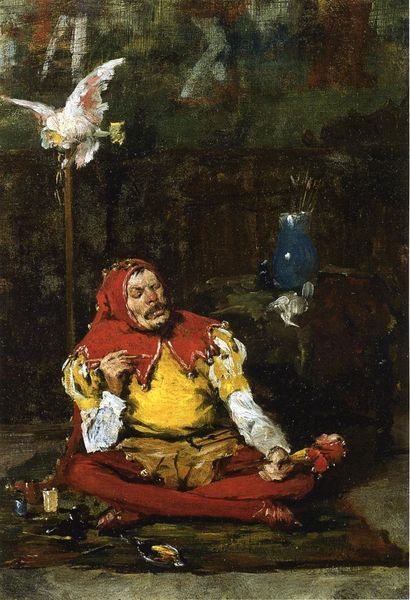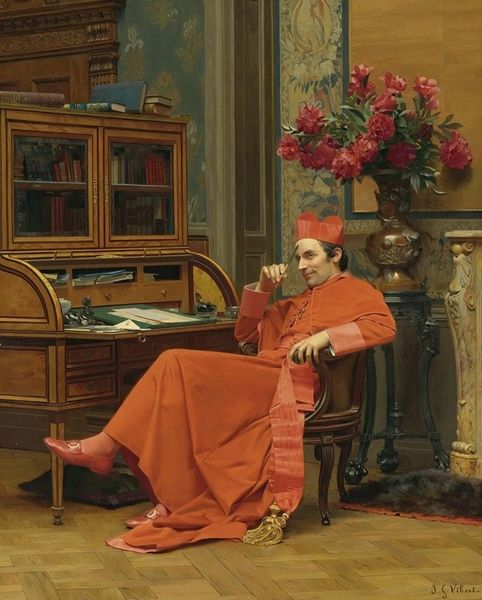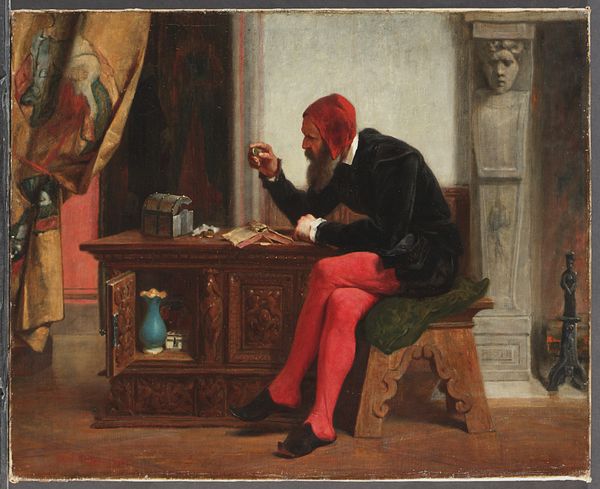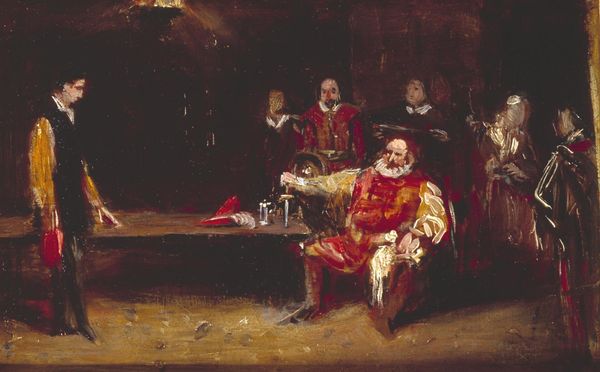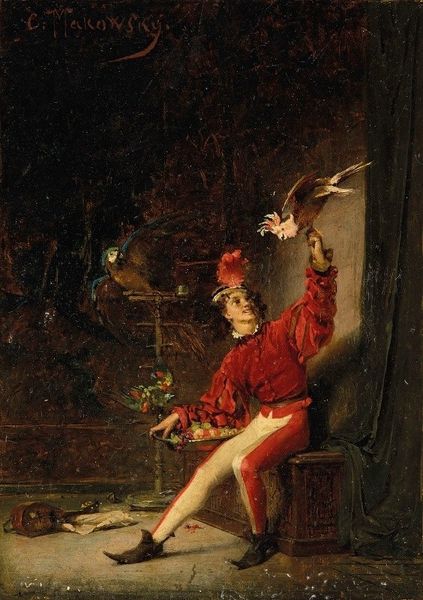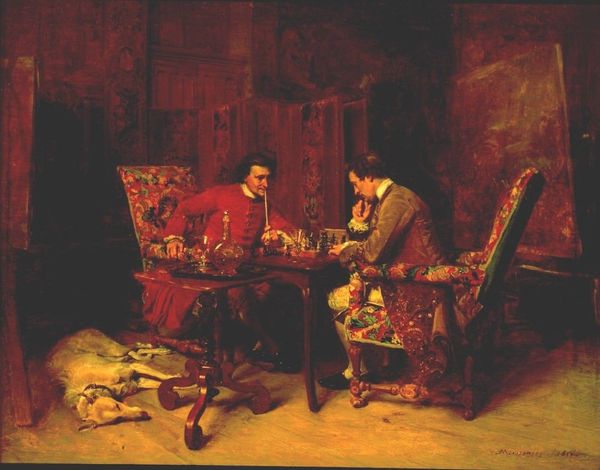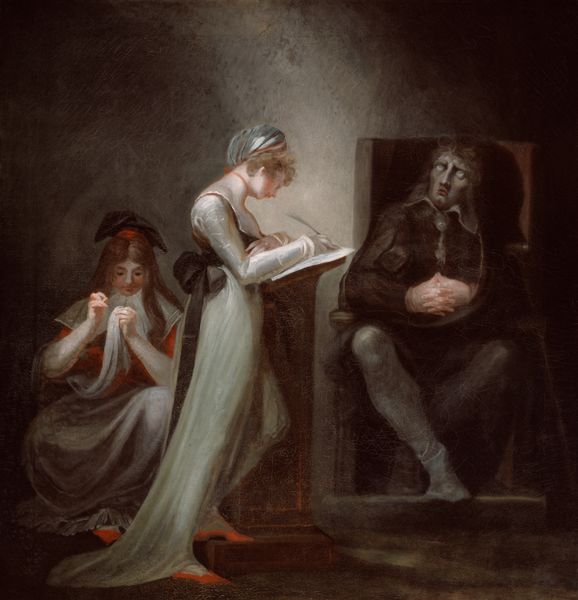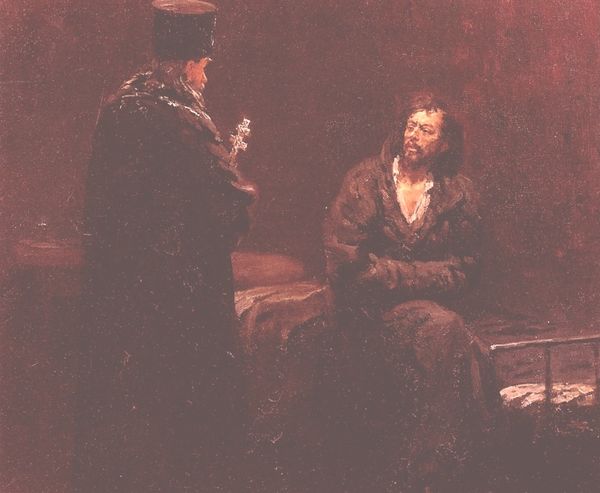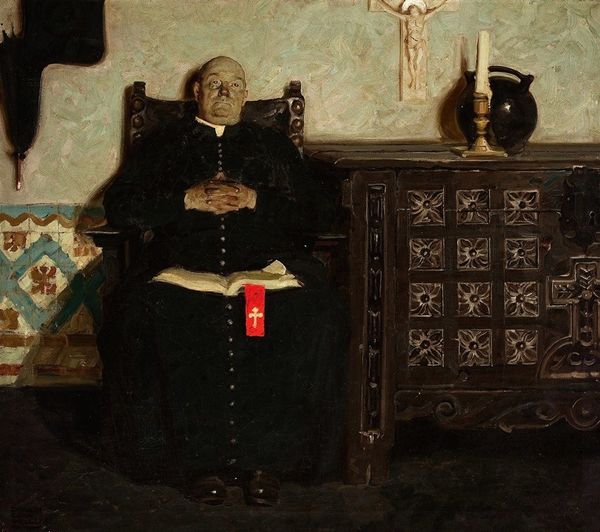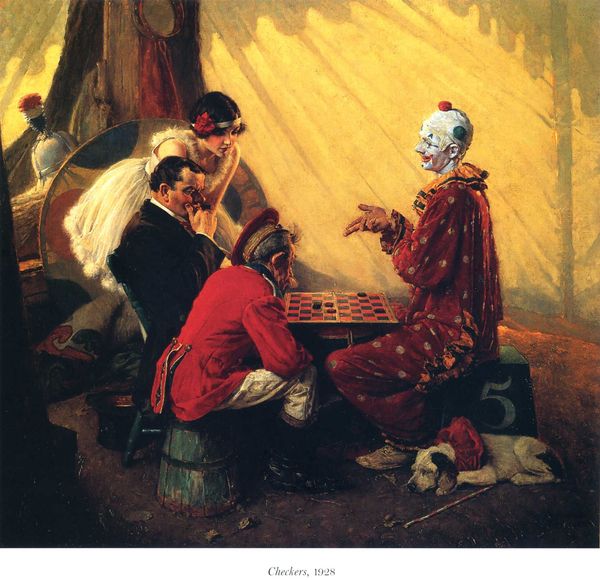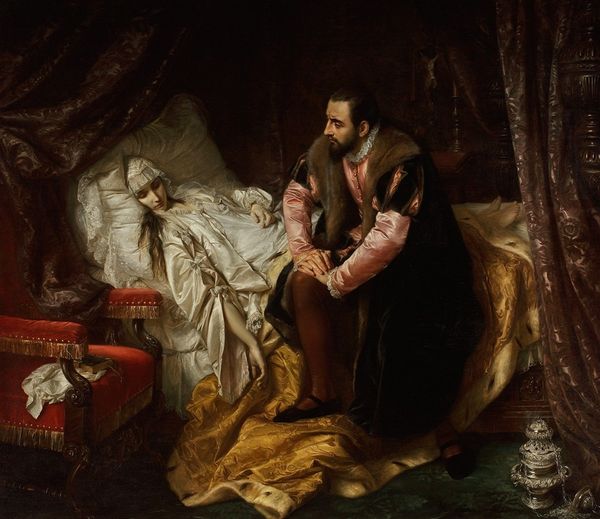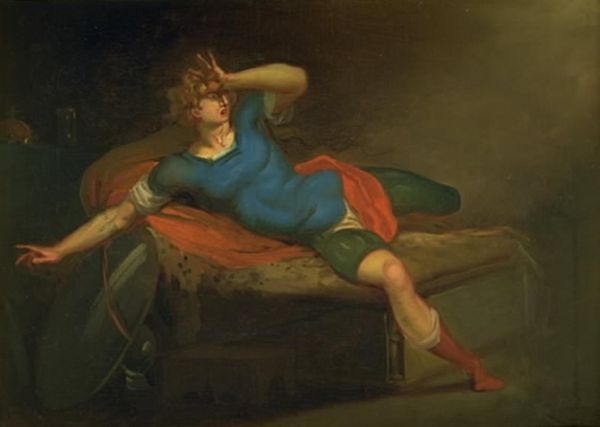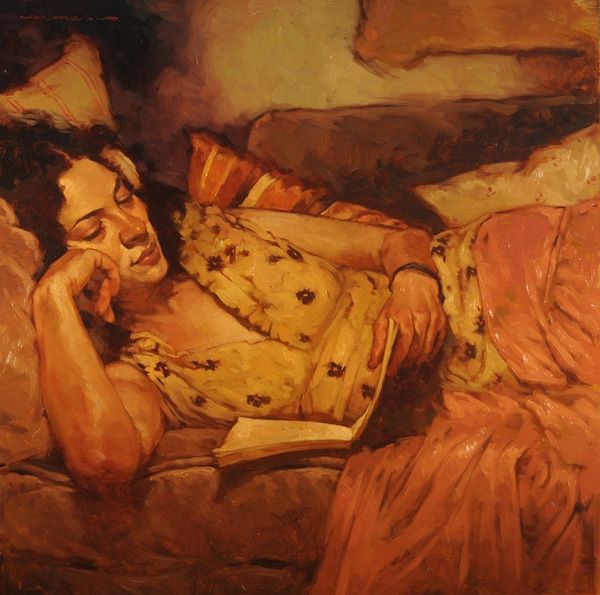
Copyright: Public Domain: Artvee
Completed in 1862, ‘Stańczyk’ is a large-scale oil painting by the Polish history painter Jan Matejko (1838-1893). Matejko is amongst the most famous Polish painters, known for his blend of academic realism with theatricality. His style is often referred to as ‘historical symbolism’. This work depicts a Polish court jester, Stańczyk (c. 1480-1560), seated alone in a dark room. He appears troubled and contemplative; he gazes into the distance as if lost in thought. His posture is slouched, and he clasps his hands together. The stillness and isolation of the figure is contrasted by the lively party which can be glimpsed through the open door on the right-hand side of the canvas. Matejko has painted the jester in a costume consisting entirely of red. This bold shade was commonly worn by court fools to clash with the formal wear of the nobility. Here, however, the colour takes on an ominous symbolism – it suggests a sense of doom. Stańczyk also wears a traditional three-pronged hat adorned with bells. On the rug near his feet lies his marotte, or prop sceptre. The positioning of the stick, often associated with jester’s pranks, on the floor suggests it has been thrown down and momentarily forgotten. The painting clearly subverts expectations of the figure of the jester. Usually associated with joviality and good humour, Stańczyk is here depicted as gloomy and concerned. The anxious atmosphere is reinforced by the dark colour palette. Why might the jester be so worried? The full title of this painting is ‘Stańczyk during a ball at the court of Queen Bona in the face of the loss of Smolensk’. Smolensk is a city was captured by the Grand Duchy of Moscow in 1514. Take a look at the table next to the jester – do you notice the scrunched-up letter? Here, Matejko suggests that Stańczyk has just discovered the news of Smolensk’s capture, and is troubled by the possible downfall of his country. Such a narrative is significant when considering the political turmoil of Poland at the time the artist was working on this painting. Might Jan Matejko be using the genre of history painting to draw attention to events in his own society? ‘Stańczyk’ was looted by the Nazis during the Second World War, but was returned to the National Museum of Warsaw in the 1950s. It is now an iconic image of paradox and interior life. What do you think of the painting? Editor: Lucy Jude Grantham
